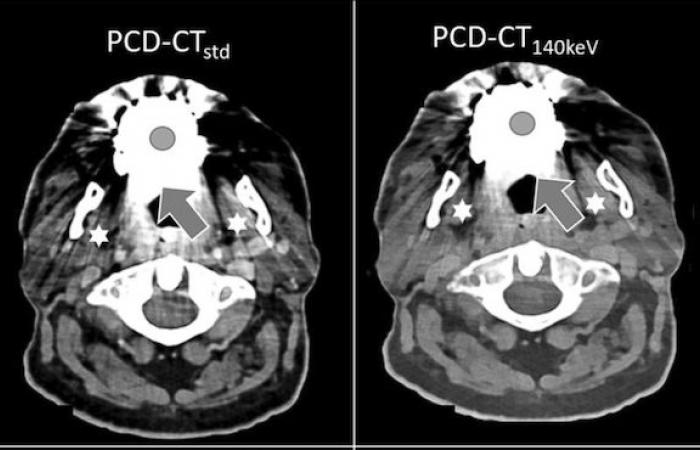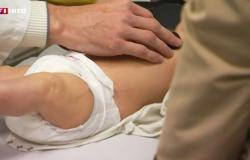Can Photon Counting CT Really Attenuate Metal Artifacts? This is what a German study published in the Journal European Radiology seeks to prove. This work shows the effectiveness of different CT-CP approaches combined with specific protocols for the reduction of metallic artifacts.
Artifacts caused by metal implants in computed tomography (CT) are expected to increase due to demographic changes in Western societies. Several strategies for reducing these artifacts have been proposed over the last decades, including iterative metal artifact reduction (iMAR) techniques, virtual monoenergetic reconstruction at high keV and sinogram inpainting approaches involving models of AI, which have shown promising results in different scenarios.
Can Photon Counting CT Really Attenuate Metal Artifacts?
With the recent introduction of the Photon Counting CT (CT-CP) detector, a new opportunity for artifact reduction has become available. Unlike conventional energy integrating detectors (EIDs) which convert incoming photons into electrical current via visible light, photon counting detectors facilitate a direct conversion with the ability to count individual photons and measure their energy level in the detected spectrum. A recent German study published in the Journal European Radiology describes its advantages in the context of metal artifacts.
Study explores potential of CT-CP combined with specific protocols
In this work, researchers explored the potential of an iMAR algorithm alone and in combination with high-keV monoenergetic images at 140 keV on first-generation clinical CT-CP for the reduction of metal artifacts in carrier patients. dental implants and restorations. They hypothesized that these different approaches with the new CT-CP technology enable effective artifact reduction, to achieve significantly improved subjective and objective image quality.
Overall quality, severity of artifact, and delineation of adjacent anatomy assessed
 Consecutive patients with dental implants were prospectively included in this study and underwent CP-CT of the craniofacial area. Four series have been reconstructed (standard [PCD-CTstd]monoenergetic at 140 keV [PCD-CT140keV]iMAR corrected [PCD-CTiMAR]combination of iMAR and 140 keV monoenergetic [PCD-CTiMAR+140keV]). All reconstructions were qualitatively evaluated by four radiologists (independent and blinded reading on a 5-point Likert scale [5 = excellent ; aucun artefact]) regarding overall image quality, severity of artifacts, and delineation of adjacent and distant anatomy.
Consecutive patients with dental implants were prospectively included in this study and underwent CP-CT of the craniofacial area. Four series have been reconstructed (standard [PCD-CTstd]monoenergetic at 140 keV [PCD-CT140keV]iMAR corrected [PCD-CTiMAR]combination of iMAR and 140 keV monoenergetic [PCD-CTiMAR+140keV]). All reconstructions were qualitatively evaluated by four radiologists (independent and blinded reading on a 5-point Likert scale [5 = excellent ; aucun artefact]) regarding overall image quality, severity of artifacts, and delineation of adjacent and distant anatomy.
A work which shows the effectiveness of different CT-CP approaches for the reduction of metallic artifacts
The study included 48 patients (mean age 66.5 ± 11.2 years). Researchers found improved overall image quality, reduced artifacts, and superior delineation of adjacent and distant anatomy for iMAR reconstructions compared to non-iMAR reconstructions. No significant effect of these different approaches on the coefficient of variation was observed. Finally, ROI-based analysis indicated the most effective artifact reduction for iMAR reconstructions, which was significantly higher than that of PCD-CT140keV.
The researchers concluded that CT-CP offers highly effective approaches for the reduction of metal artifacts with the potential to overcome diagnostic challenges in patients with dental implants.
Bruno Benque with European Radiology








